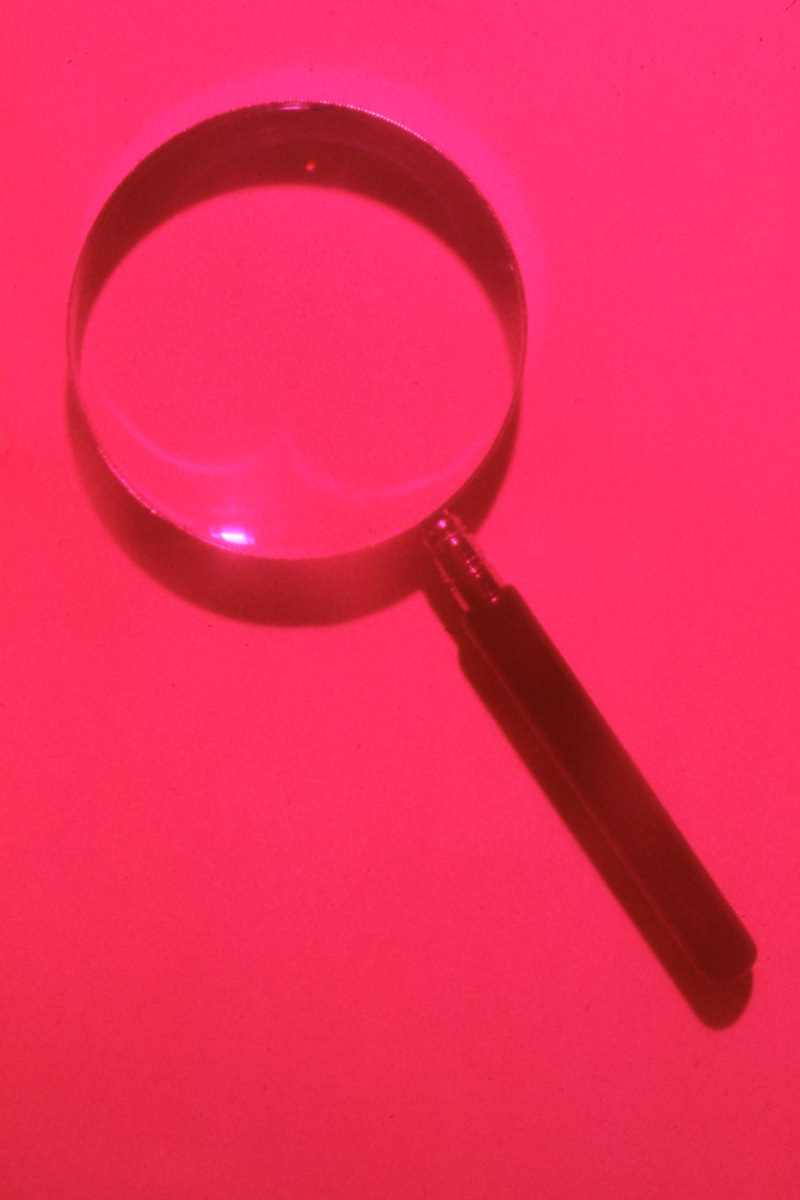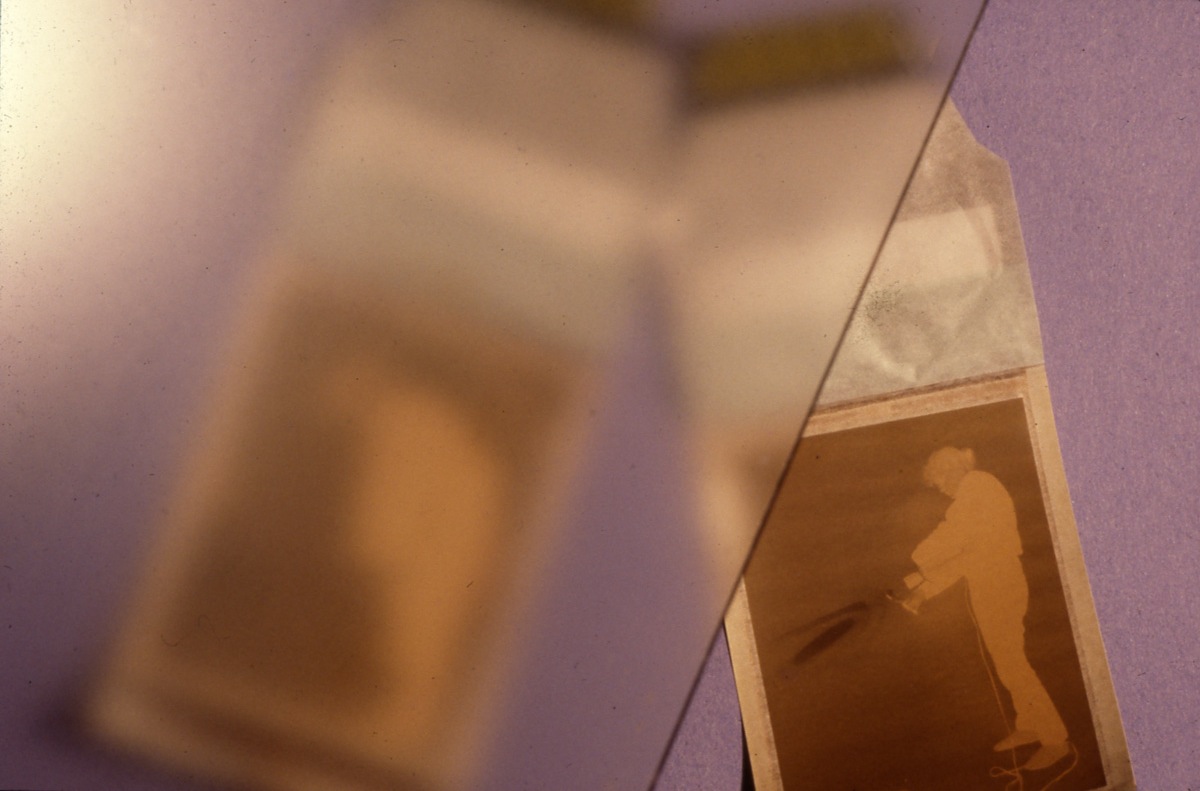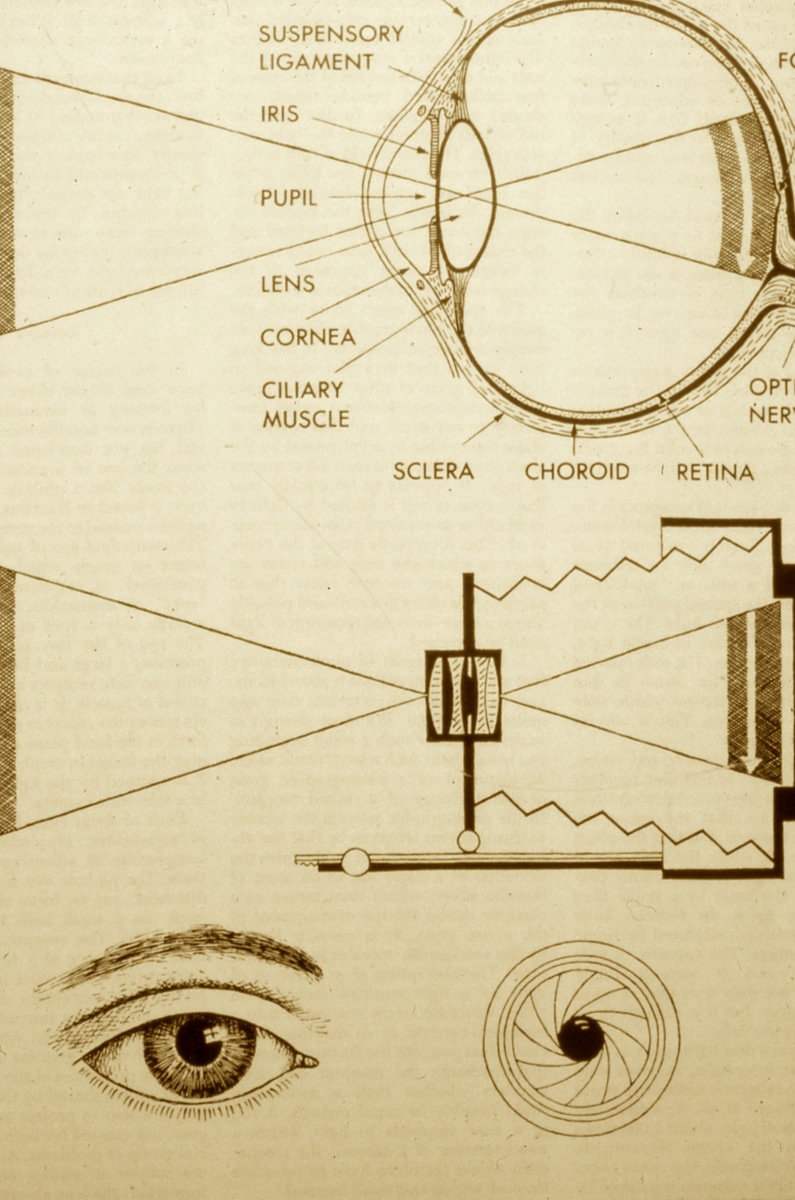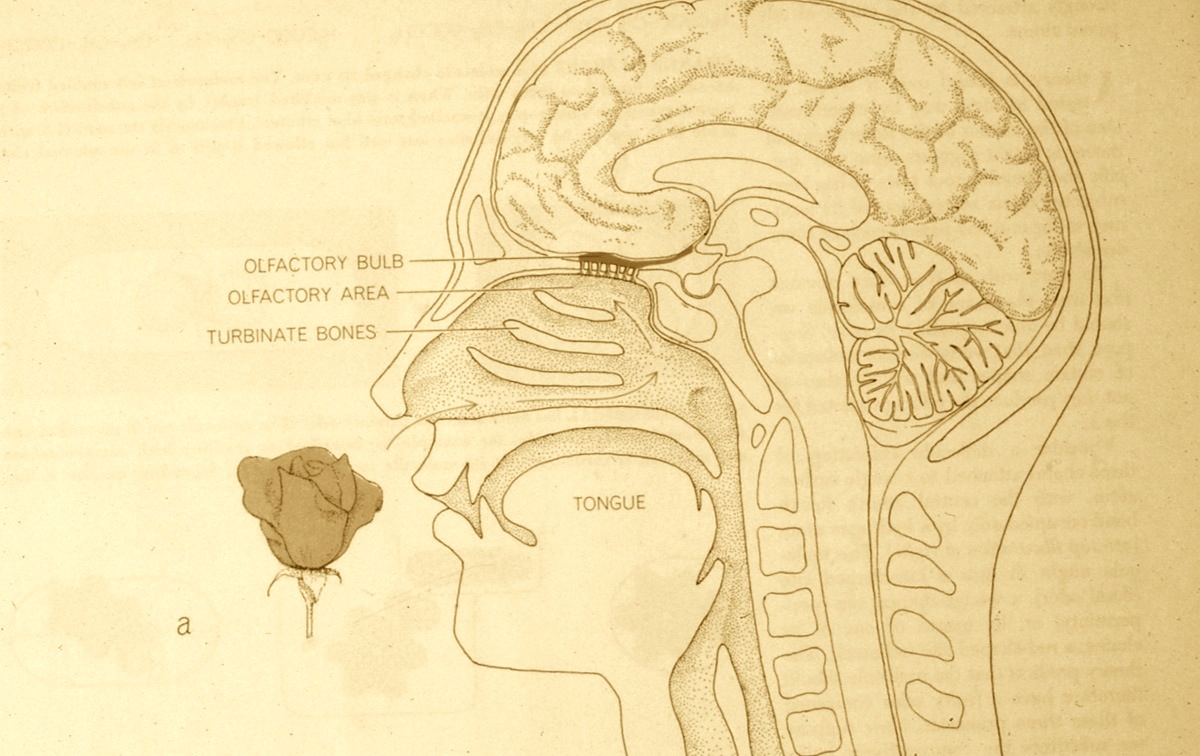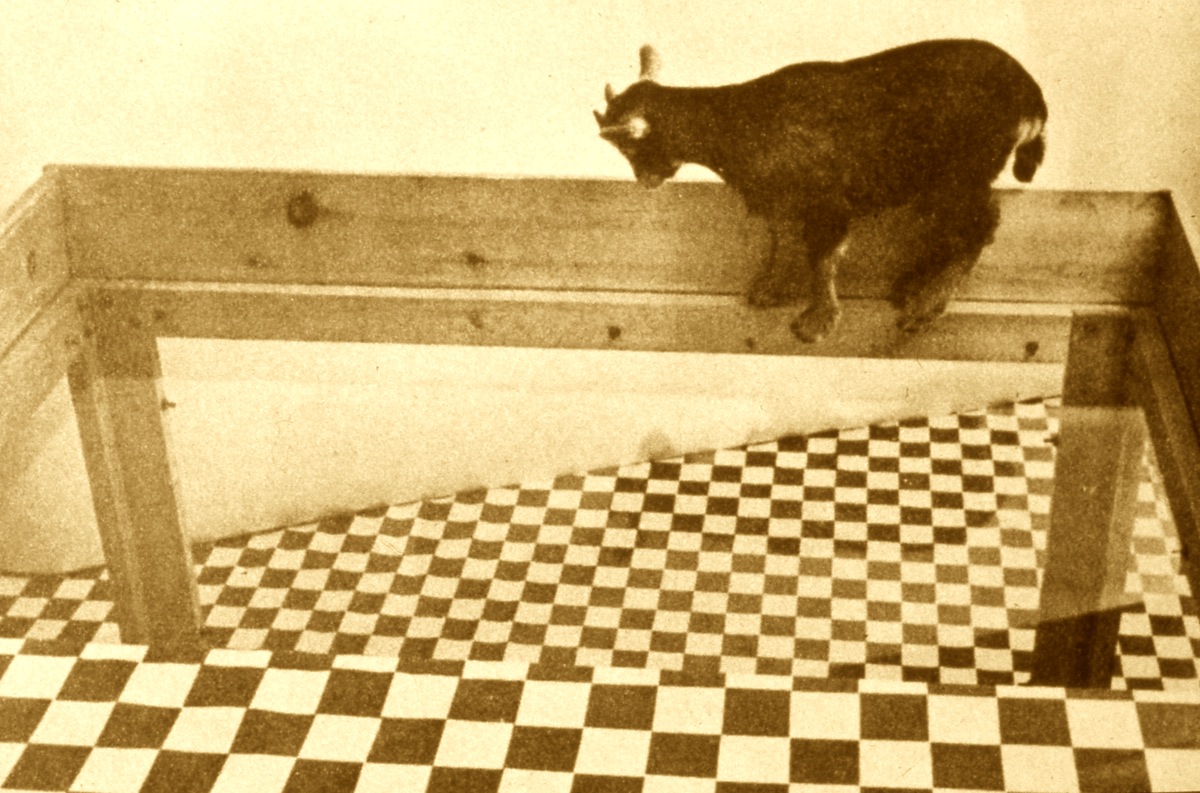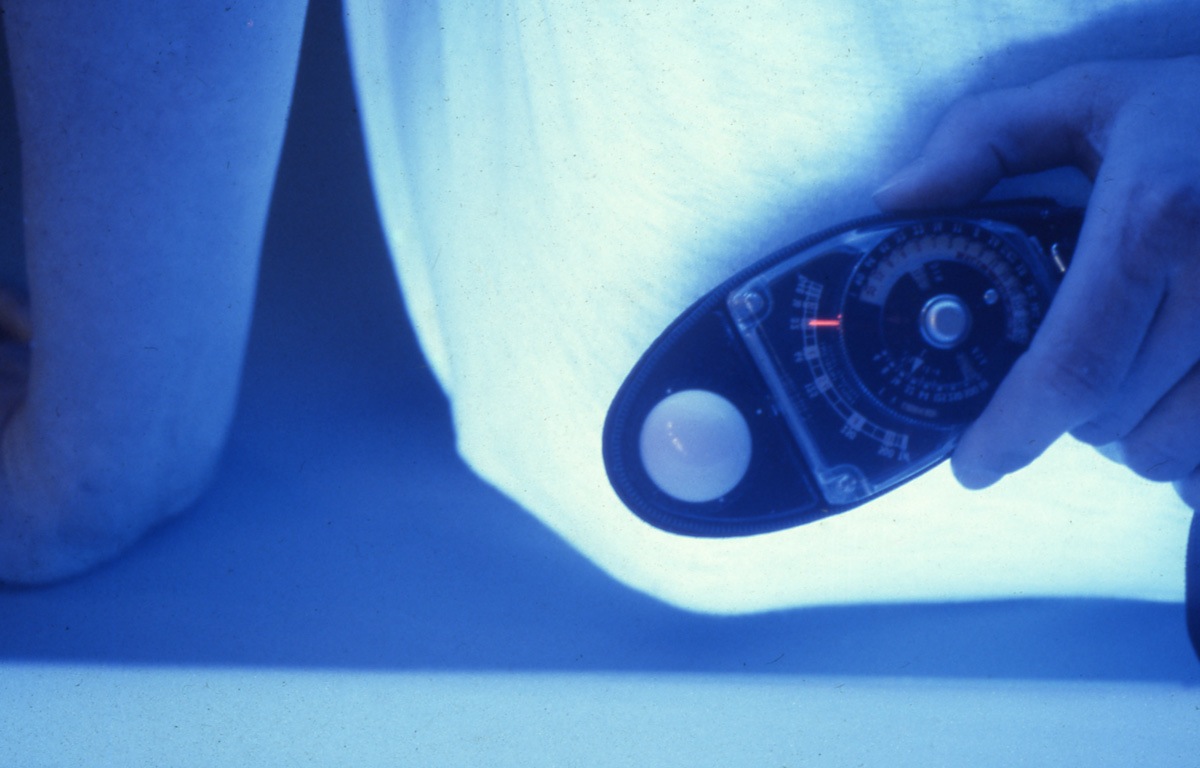Handicap, 1980
1 performer, text, music, slides, slide projector, black light tube, light on stand
I began to work on Handicap in an attempt to deal with the general concern of individual perception and its relationship to ethics, but I did not want to approach it on a pedantic level of specific ethical systems. I therefore chose to be somewhat metaphorical and as a source material turned to scientific experiments on perceptual problems. Handicap used vocabulary of physical perception and, to a lesser degree, ethics. The title refers to the “handicap” of subjectivity as a general condition of the individual in personal and social contexts.
Both pre-recorded and live-spoken texts were used and a song by Andy Paterson of the now-defunct band, The Government. There was no attempt to establish a narrative text, although narrative did structure some of it very loosely through reference to an unidentified “he”. The first image was that of a magnifying glass, shot through a pink gel, which was projected through the audience to my feet and then to the back of the performance space where I examined the diminished image with the magnifying glass itself. Most of the slides were of illustrations and photographs of perceptual experiments, such as a chick wearing a hood limiting its vision and a goat walking on a glass sheet over a checkboard visual cliff. The slide projector itself was the major source of illumination, both through its usual use and my carrying it around. I entwined my body with fluorescent tubes which glowed within a certain distance from a black light, and I was also tied with the long extension cord of the projector remote control which kept me connected to the projector when it was not in my hands. A portable photographic light was used while I held the magnifying glass to “burn” an image. The final illumination was the glow of a small black and white TV set onto my face. The visual aspect to a piece has been of very secondary importance to me in the past and in Handicap I decided to approach it more consciously.
– Performance: Text(e) & Documents. ed. Chantal Pontbriand. Editions Parachute. Montréal. 1981. 186
Performance History
Art Gallery of Ontario, Toronto, March 12 & 13, 1980
Eye Level Gallery, Halifax, March 18, 1980
Vancouver Art Gallery, September 17, 1980
Performance, Montreal, November 3, 1980
Credits
Costume: Tanya Rosenberg
Music: Andy Paterson (see below)
References
“Interview: Elizabeth Chitty”. Svitlana Muchin & Colin Lochhead. Slate. Vol. 1, No. 3, March 1980.
“Chitty dance offers moralizing and then?”. Max Wyman. Vancouver Province. September 18, 1980. D2.
“Video is not television, Performance is not theatre”. Martha Fleming and Douglas Durand. Body Politic. Number 64. June/July 1980
Performance: Text(e) & Documents. ed. Chantal Pontbriand. Editions Parachute. Montréal. 1981. 186-189
Note
The AGO performances were part of an evening titled, “Dance Into Performance” which also featured Marie Chouinard. A controversy ensued over Marie Chounard’s performance which included urinating in a bucket. It was attributed to both artists in the press and this followed me around for years. For example, during a 1982 campaign to cut arts funding, a Toronto City Councillor used the peeing-in-the-bucket as a reason to cut funding while I was Chair of Trinity Square Video. (Artists including Ric Amis organized a counter-campaign, Citizens for the Arts, of which I was Spokesperson.) I received a crank phone call at home from an “outraged taxpayer”. At the time of the performances, the Ontario Culture Minister responded by threatening “intervening” in AGO funding. The incident took place in the context of an era that was fraught with censorship issues in the art community, particularly in video art and experimental film.
Ironically, the commissioned song, Arbeitverbot, took its name from the order given by the Third Reich to stop artists from working. I was very engaged in research on the Third Reich throughout the gestation of Handicap, and in looking back, I see that this interest as precipitated by the censorship issues (and possibly as well by the hostility I often encountered to my work. Obviously, we enjoyed tremendous privilege and freedom comparatively.)
In preparing this page, I have returned to my Third Reich sources. Here is a reference:
“These sanctions ranged from Lehrverbot (deprivation of the right to teach) through Ausstellungsverbot (deprivation of the right to exhibit) to the most crippling of all, Malverbot (deprivation of the right to paint). Lest the Malverbot should be circumvented to the privacy of the artist’s home, the Gestapo would carry out lightning raids of inspection, checking up – as in Carl Hofner’s case – on whether the paint brushes were still wet. They also placed lists of proscribed artists in the paint shops, so as to cut off their supply of materials at source.”
A Social History of the Third Reich. Richrd Grunberger. Penguin Books. 1974. 545.
Another key reference for me was Art Under a Dictatorship. Hellmut Lehmann-Haupt. Octagon Books. New York. 1973
– Elizabeth Chitty, 2014
Top and bottom black and white photos by Bob Barnett. Bottom slide show is 7 of 18 slides projected in Handicap. There were an additional 2 blanks and slide projectors in 1980 projected white light when no slide was inserted in a carousel slot, which aided my use of the projector as light source.
Handicap audiotrack (digitized from damaged 1/4″ reel-to-reel tape)
Text and voiceover by Elizabeth Chitty, commissioned music and lyrics by Andy Paterson of The Government. The audio was played intermittently during the performance. (See sidebar: https://soundcloud.com/bodyofwater/handicap)




